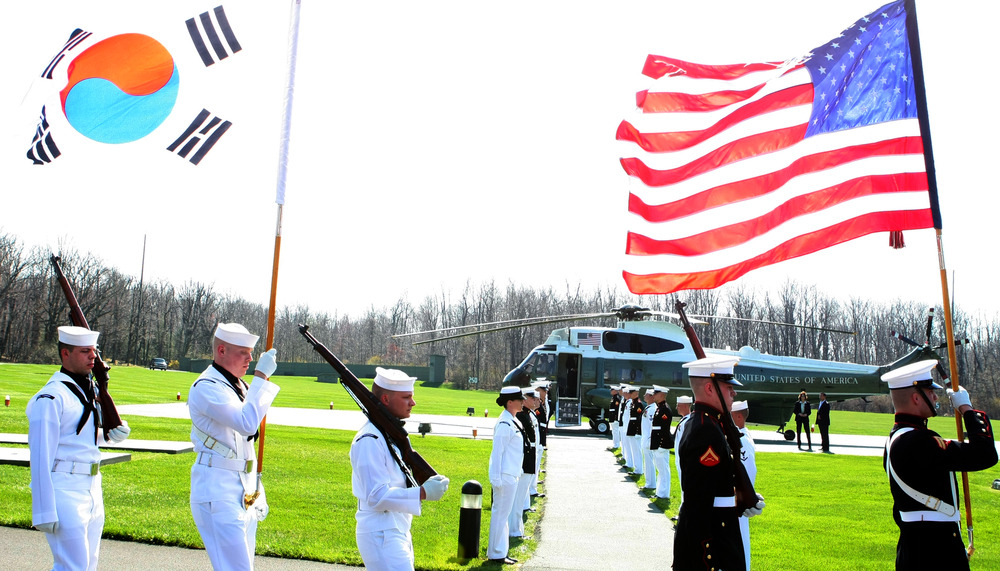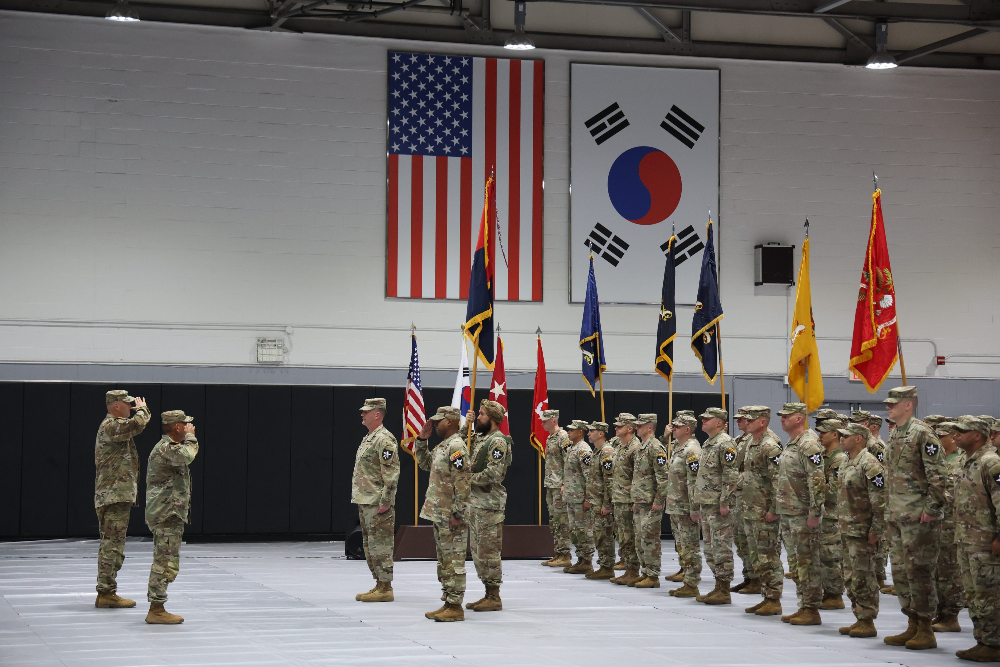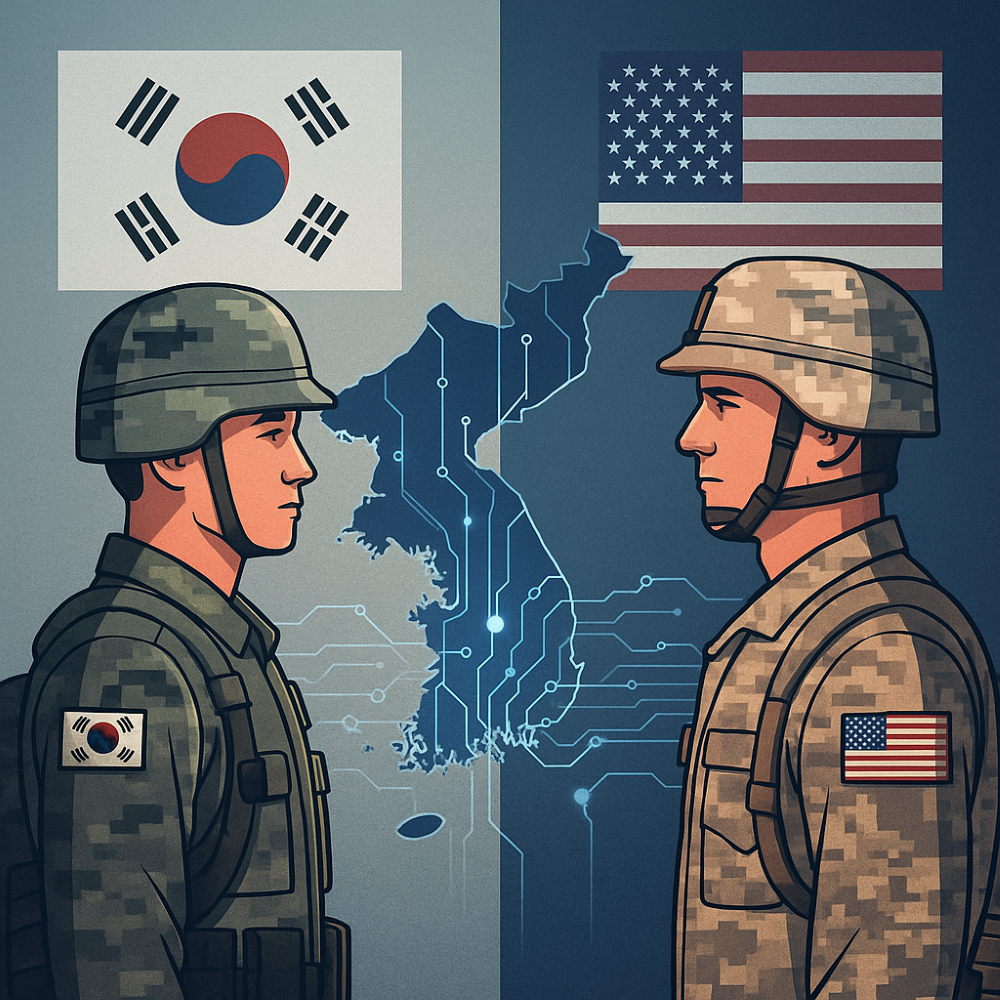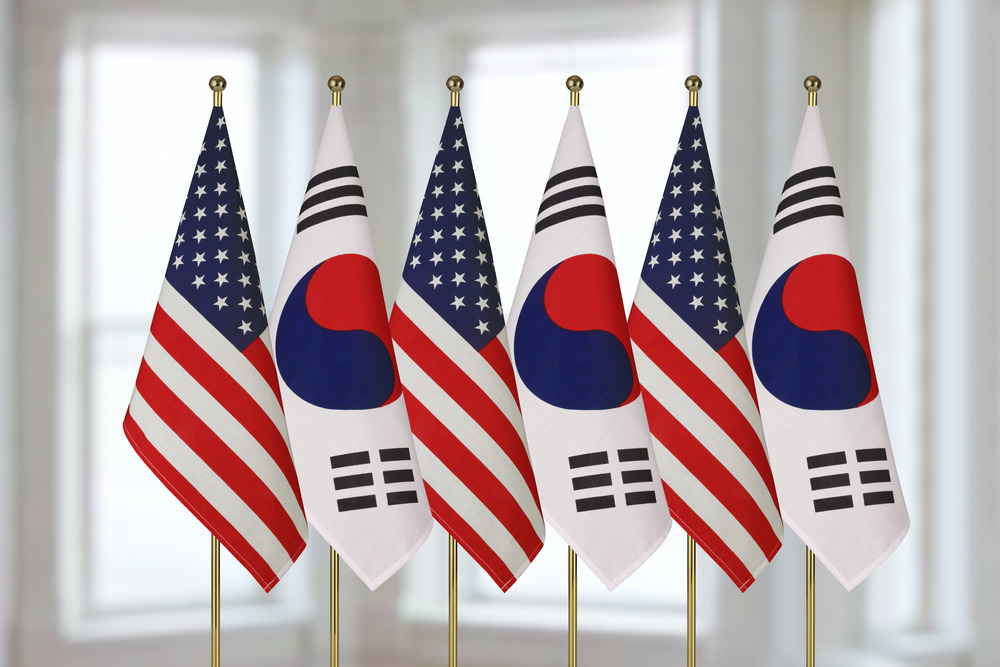
- #Security & Defense
- #South Korea
- #US Foreign Policy
- #US-ROK Alliance
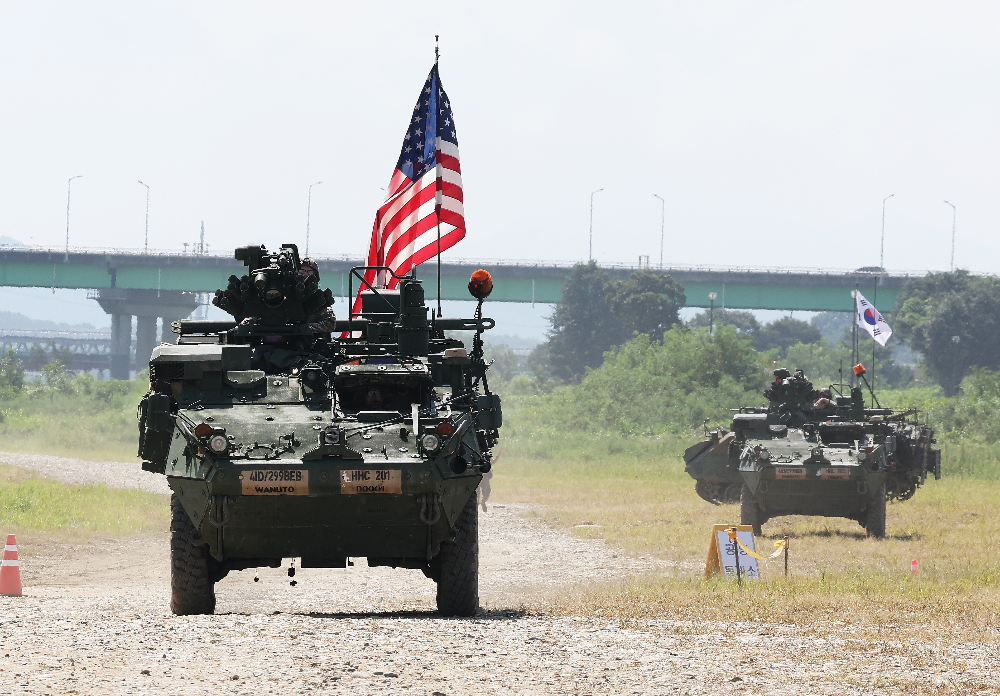
Key Takeaways:
- Establish a Shared Threat Perception: A unified strategic approach to the threats from both North Korea and China is the essential foundation for modernizing the alliance and avoiding internal friction.
- Aim for "Alliance Flexibility" over National Autonomy: The goal must be to develop a cohesive, rapid response capability for the entire alliance, not just to increase the strategic autonomy of each individual nation.
- Build Consensus on Fundamentals First: Before tackling specifics like cost-sharing or the role of U.S. forces, the allies must first establish a firm consensus on their shared threats and the credibility of extended deterrence.
An Era Requiring Alliance Flexibility
Although the term “alliance modernization” surfaced during the second Trump administration, the concept itself has yet to be clearly defined amid a rapidly evolving security environment. Within this broad and ambiguous framework, South Korea and the United States have emphasized the importance of the alliance and sought areas of convergence. However, there is still no official agreement on what constitutes the most essential and distinguishing features or components of alliance modernization compared to earlier conceptions. It is observed that, under the rubric of “alliance modernization,” both sides are attempting to incorporate as many of their respective priorities as possible while negotiating points of consensus.
This approach overlooks the aspect of “alliance flexibility” — namely, how swiftly and effectively the ROK-U.S. alliance must enhance its strategic adaptability in response to the rapidly changing security environment in the Indo-Pacific region, China’s growing military power and expanding influence, North Korea’s advancing nuclear and missile capabilities and its strategic alignment with China and Russia, as well as the potential for a Chinese invasion of Taiwan, all while being constrained by the institutional rigidity inherent in the alliance structure. The problem is that, in emphasizing the strengthening of the alliance, excessive attention has been directed toward issues of entanglement and burden sharing stemming from obligations and commitments. Under the rubric of alliance modernization, this tendency has only heightened ambiguity regarding what the future of the alliance ought to be.
In particular, the personal views and assessments of President Trump regarding alliances and China, as well as those of President Lee Jae-myung concerning the alliance, North Korea, and China, are exerting significant influence within the framework of alliance modernization. Interestingly, President Trump’s excessive pressure on allies to increase defense spending and President Lee’s strong determination to reclaim wartime operational control during his term appear to facilitate relatively easy convergence between Seoul and Washington on the issue of burden sharing.
However, it simultaneously raises the question of how the issue of “autonomy” — the capacity to minimize the risks of alliance “entanglement” — will shape the future of the alliance. In other words, it remains unclear how the expansion of each side’s strategic autonomy within a strong alliance framework can translate into more rapid and effective response capabilities. There is no guarantee that the respective strategic flexibility and autonomy of each party will converge into alliance-wide flexibility. On the contrary, the differing forms of strategic flexibility and autonomy pursued by each member may lend credence to perceptions that the alliance is institutionally rigid. Such perceptions and assessments, if left unaddressed, could potentially evolve into mistrust or conflict within the alliance.
This is precisely why concerns have emerged that the key issues related to alliance modernization may serve as potential sources of friction between the ROK and the United States, rather than as opportunities to enhance mutual benefits. If the differences in perception and prioritization between the ROK and the United States regarding key issues lead each side to pursue greater strategic flexibility and strategic autonomy, the foundational elements of the alliance—shared threats and mutual trust—will be weakened. In such a scenario, the alliance is likely to become more rigid rather than respond flexibly to change. Therefore, at the very core of alliance modernization must lie the principle that the strategic flexibility and autonomy of South Korea and the United States should evolve into flexibility at the alliance level.
The Future Direction of Alliance Modernization
Recent public opinion surveys conducted around the same time in both South Korea and the United States reveal a striking trend: more than 60 percent of citizens in both countries share nearly identical views on the importance of the ROK–U.S. alliance, its role as a stabilizing force in the Indo-Pacific region, the future presence and scale of U.S. Forces Korea (USFK), perceptions of the China threat, and the implications of a potential Chinese invasion of Taiwan for the Korean Peninsula.[1] Moreover, more than 60 percent of the South Korean public expressed a positive attitude toward the evolving nature of U.S. Forces Korea’s strategic flexibility in responding to the growing threat from China. [2]
In addition, it is noteworthy that approximately 60 percent of South Koreans perceive that the role of USFK and the ROK–U.S. alliance should extend beyond the traditional defense of the Korean Peninsula—namely deterrence against North Korea—to encompass the broader Indo-Pacific region. This indicates that the Korean public’s view of the alliance is moving beyond a narrow, peninsula-centric framework and reflects a growing willingness to embrace comprehensive security cooperation at the regional level.
At minimum, several common elements can be identified as core components of alliance modernization as perceived by the publics of both South Korea and the United States.
First, neither South Koreans nor Americans subscribe to a binary view that prioritizes threats differently—North Korea for South Korea and China for the United States. Rather, both publics perceive both North Korea and China as threats. Furthermore, when considering the potential causes of heightened instability on the Korean Peninsula in the event of a Chinese attack on Taiwan, respondents point to the possibility of strategic cooperation between Pyongyang and Beijing. In addition, U.S. public opinion polls indicate that, in a hypothetical Taiwan contingency requiring a choice between Taiwan and South Korea, support for prioritizing South Korea is higher.
These perceptions among the South Korean and American publics suggest at least two implications. First, a Chinese attack on Taiwan would not only destabilize the Korean Peninsula but also increase insecurity across the broader Indo-Pacific region. Second, South Korea is viewed as an important partner in the pursuit of U.S. strategic interests.
Indeed, China has been increasing the number of incursions into the Korea Air Defense Identification Zone (KADIZ), including during the annual China–Russia joint military exercises. Moreover, China has adopted an approach toward the West Sea that mirrors its behavior in the South China Sea toward the Philippines and Vietnam—for example, unilaterally installing artificial structures in the Provisional Measures Zone (PMZ), which was established in the 2000s to manage fisheries disputes in the overlapping Exclusive Economic Zones of South Korea and China.
China’s unilateral measures to expand its influence, along with its military buildup and displays of force, are clearly perceived as threats by South Korea. Negative perceptions of China range between 70 and 80 percent. The view of China as an “enemy” has stabilized at around 30 percent—declining from 44 percent in 2023 to 30 percent in 2024 and 29 percent in 2025. Notably, the perception of China as an “enemy” (29%) is nearly four times higher than the perception of China as a “friend” (8%). By contrast, the largest share of respondents—63 percent—identified China as “neither a friend nor an enemy,” making the neutral stance the most prevalent among the response categories.[3]
Second, public opinion reflects a stronger preference for defending the alliance rather than concerns over entanglement or abandonment. This perception underscores a fundamental principle that should remain unchanged in the context of alliance modernization: namely, that the alliance must manage situations stably and prevent threats from escalating into crises through the “4D” framework—Deterrence, Denial, Dissuasion, and Defeat. Even if the United States’ strategic flexibility, and the resulting potential adjustments to the mission and force structure of U.S. Forces Korea, are primarily driven by the need to counterbalance China, the 4D commitments to its ally, South Korea, must be guaranteed in proportion to the growing North Korean threat. Furthermore, in response to North Korea’s explicit claim to be an “irreversible nuclear state,” the strengthening of extended deterrence capabilities and the pursuit of denuclearization must proceed with consistency and resolve.
Third, there is strong support for expanding the scope of cooperation to enhance alliance capabilities. South Korea and the United States have long shared a vision for a comprehensive strategic alliance, as reflected in the 2000 ROK–U.S. Alliance Joint Vision and the 2010 ROK–U.S. Defense Cooperation Guidelines. During the Obama administration, the ROK–U.S. summits declared the establishment of a “global partnership for peace and security,” identifying areas of cooperation such as cyberspace, climate change, and global health.
In the first Trump administration, the 2017 ROK–U.S. summit advanced the alliance into a “global comprehensive strategic alliance.” Under the Biden administration, the alliance was reaffirmed as a “strategic global alliance,” with a focus on strengthening cooperation in advanced military technologies, cyber and space domains, advanced industries, and supply chain stability.
In this way, the ROK–U.S. alliance has evolved geographically beyond the Korean Peninsula, promoting peace, security, and prosperity across the broader region. In terms of capabilities, it has expanded from addressing traditional military threats to enhancing responses to non-traditional security challenges. The scope and depth of cooperation have steadily increased, extending from defense to areas such as economic collaboration, health, supply chain resilience, advanced technology, cyber, space, defense industry, and shipbuilding.
The three commonalities and characteristics identified in the public opinion surveys conducted in South Korea and the United States correspond closely with the prospective trajectory of a modernized ROK–U.S. alliance. The future alliance is expected to expand across security, economic, technological, and values-based dimensions, while deepening cooperation within each of these domains.
First, in the military and security domain, the alliance’s deterrence scope, capabilities, and interoperability will be strengthened in response to changes in the capacities of adversaries and traditional threats. Additionally, cooperation will be enhanced in emerging security areas, including cyber warfare, space security, missile defense (MD), and unmanned systems.
Second, in the economic and supply chain domain, complementary collaboration will be reinforced in future industries such as semiconductors, batteries, artificial intelligence (AI), and green energy, contributing to the establishment of resilient supply chains.
Third, in the domain of global values, both countries share commitments to liberal democracy, human rights, and free-market principles. Cooperation will also be strengthened in non-military areas such as safeguarding a “rules-based order” to mitigate the instability and negative externalities associated with high-tech developments like AI, addressing climate change, global health, and development assistance.
Finally, the alliance is poised to become a central pillar of mini-lateral cooperation in the Indo-Pacific region. Beyond the bilateral framework, the ROK–U.S. alliance is evolving into a key axis linking with Japan, Australia, the Philippines, and other Southeast Asian countries, forming the backbone of broader regional security and strategic collaboration.
Recommendations for Overcoming Challenges in Alliance Modernization: Enhancing Resilience, Effectiveness, and Flexibility
The ROK–U.S. alliance has continuously maintained and developed its resilience and effectiveness amid structural changes in the international system and an uncertain security environment. These dynamics have increasingly underscored the importance of strategic flexibility in alliance management. However, each time the alliance adapts and evolves in response to external changes, issues arise concerning burden sharing, capability enhancement, and national autonomy. When evaluating alliance effectiveness, three key considerations are essential: 1) Whether each ally is pursuing its national policy objectives within mutually acceptable levels of cost and risk; 2) Whether adjustments in alliance strategy are enhancing cooperation between allies; and 3) Whether strategic and tactical interoperability is being strengthened and expanded. In the context of alliance modernization, it is crucial to assess whether these three evaluation criteria are being adequately met.
Without a clear mutual agreement on the concept of alliance modernization, the second Trump administration emphasized the imposition of excessive costs associated with countering China and expanding the alliance’s role and scope in the Indo-Pacific region. In contrast, the Lee Jae-myung administration has emphasized the strengthening of autonomous defense—that is, the enhancement of national autonomy—by pursuing the transfer of wartime operational control within its term, building a “smart, strong military” based on advanced science and technology, and increasing the national defense budget. Within the framework of alliance modernization, the United States appears to focus on deterring the Chinese threat and promoting stability and peace in the Indo-Pacific, while South Korea emphasizes leading the deterrence of North Korea and contributing to regional stability and peace, suggesting a well-defined division of labor between the two allies.
However, it cannot be assumed with complete certainty that increased burden sharing, capability enhancement, and greater autonomy will automatically translate into enhanced cooperation, improved interoperability, and increased flexibility in alliance operations.
Excessive expansion of the alliance could potentially challenge its cohesion, and China and North Korea might exploit such circumstances as opportunities to weaken the alliance. In scenarios assuming a Chinese attack on Taiwan or other contingencies, China could leverage strategic coordination with North Korea and Russia to test the resilience of the ROK–U.S. alliance, turning these situations into opportunities for conflict or weakening within the alliance. Ultimately, the fundamental principle underpinning alliance cohesion is that it grows stronger with a shared perception of threats. If this shared understanding is undermined, any expansion of the alliance’s missions and roles will inevitably increase potential fissures.
Therefore, within the framework of alliance modernization, it is essential to clearly establish and reach consensus on: 1) A shared perception and strategic approach to threats from North Korea and China; 2) The enhancement of extended deterrence and credibility regarding the North Korean nuclear issue. Only with these foundations in place can issues such as: 3) Increases in defense cost-sharing; 4) Adjustments to the mission and role of U.S. Forces Korea based on strategic flexibility; 5) The development of ROK–U.S.–Japan security cooperation and the strengthening of mini-lateral networks in the Indo-Pacific; and 6) Challenges related to advanced technology and defense industry collaboration—including technology control, export regulations, and supply chain policies—be effectively addressed. Meeting these conditions ensures that operational flexibility within the alliance is enhanced across each of these domains.
[1] Je Heon(James) Kim, “Public Opinion and the Future of the U.S.-South Korea Alliance”, The Peninsula, KEI, Sep. 30, 2025. https://keia.org/the-peninsula/public-opinion-and-the-future-of-the-u-s-south-korea-alliance/ ; Kyung Suk Lee, “South Korean Public Opinion on ROK-U.S. Alliance Modernization: Perceptions of Evolving Role of United States Forces Korea (USFK) in Korea Based on the First ROK-U.S.-Japan Public Opinion Poll”, EAI Issue Briefing, SEP. 05, 2025. https://www.eai.or.kr/eng/press/press_01_view.php?no=13385
[2] Kyung Suk Lee, Ibid.
[3] “Comparison of China's Image and Sino-Korean Capabilities”, 2025 Public Perception Survey, Korea Research, Feb.19, 2025. Capabilities,Khttps://hrcopinion.co.kr/en/archives/32194

Ho-ryung Lee is Senior Research Fellow in the Center for Security Strategy at the Korea Institute for Defense Analyses (KIDA). She handles various security issues especially focused on North Koreasuch as nuclear capability, military threat analysis, two Korea’s military negotiation strategy, inter-Korean relations, and US-North Korea relations. Dr. Lee has a Doctoral degree (2001) in political science from Korea University.
